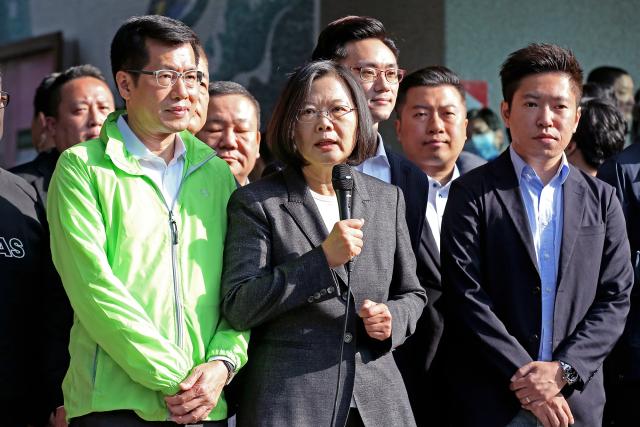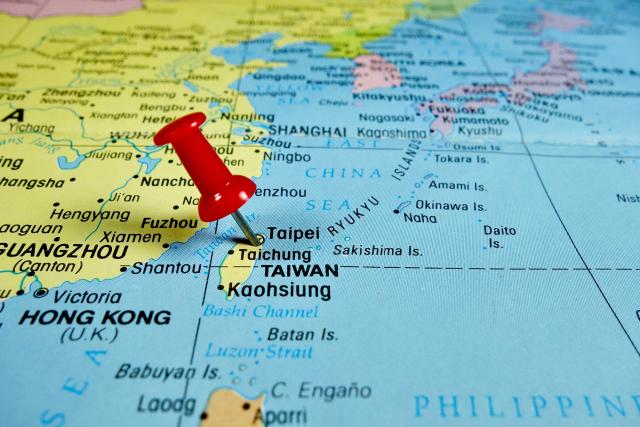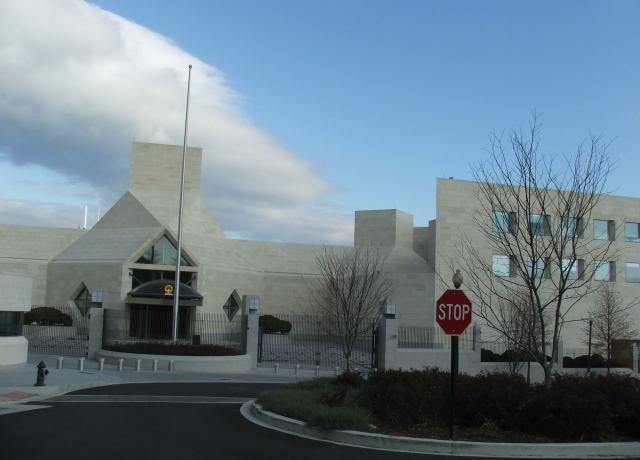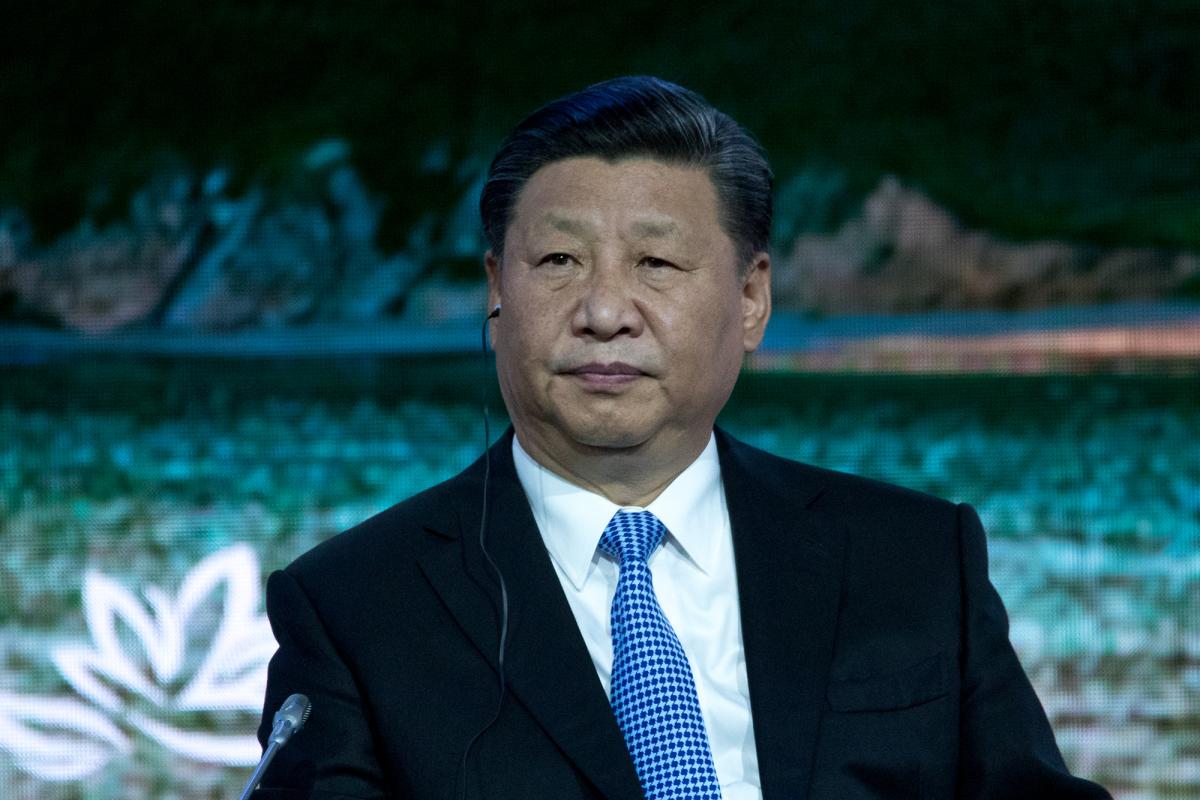The beginning of major state-on-state conflict is almost always a surprise . . . at least to one of the two sides. The China–Taiwan conflict of early 2021 was no exception. The overlapping factors that brought it about now seem so obvious in retrospect. First, the convergence of Thucydides’ three sources of conflict—fear, honor, and interest—was unprecedented at the time. On top of this, Chinese recognition of a once-in-a-lifetime opportunity and leader Xi Jinping’s eagerness to solidify his re-election in 2023 made it almost inevitable.
Why Now?
Regarding “fear” as a source of the conflict, we always knew the Chinese Communist Party, as an authoritarian regime, harbored as its principal concern a loss of control over its own population. As the roller coaster year of 2020 dragged into its second half, a resurgence of COVID-19—this time scattered throughout the country and again initially covered up by the regime—began to cast real doubt among the Chinese population of the competence of the Party and its leader Xi Jinping. The crash of the Chinese economy, due partly to COVID and to secondary sanctions imposed by the United States on China’s banks after the crackdown in Hong Kong (itself the result of a U.S. administration wanting to look tough on China during an election campaign), only exacerbated Xi’s concerns. Watching protests break out and fully aware of the historical fragility of the so-called “Mandate from Heaven,” Xi began to look for an external cause to distract the population from its mounting anger and anxiety.
As for “honor,” we were always aware of China’s ambition to integrate what it viewed as the renegade province of Taiwan into the mainland People’s Republic. Early in his rule, Xi dispensed with the patience Deng Xiaoping expressed on this matter, making reunification a regular part of his political speeches. For its part, Taiwan’s leader Tsai Ing-wen, sensing Chinese political weakness stemming from internal stresses and feeling pressure from inside her Democratic Progressive Party to respond to Xi, began to extend her own rhetoric regarding independence into areas previously considered taboo. Without calling for outright independence, Tsai went so far as to say that with the loss of the “Hong Kong model,” reunification at any time in the future no longer seemed possible.

Taiwan's President Tsai Ing-wen (center) pushed for greater independence after Beijing's
crack down in Hong Kong. (Shutterstock)
Further, the humiliating rhetoric and action that accompanied the ramp-up to the U.S. election—in what was a race to the bottom from both candidates to show who would be toughest on China—only made matters worse. A U.S. travel ban on Chinese Communist Party members and their families, imposed right before many students were preparing to travel to the States to continue their higher education, was an embarrassment and impacted carefully laid plans to exfiltrate additional U.S. intellectual property. Perhaps most startling for Beijing was the visit of the U.S. Chairman of the Joint Chiefs of Staff to Taipei—the most senior U.S. official to visit the island in decades—followed by a brief training detachment of U.S. Air Force F-22 Raptors to the island.
The factor of “interest” was complex and clearly overlapped with the other two factors. The U.S. campaign against Huawei was seen by the Chinese government as a clear shot against Chinese economic interests, as well as depriving that nation of an important intelligence tool. However, dependence on microchips manufactured in the U.S. and Taiwan was a far greater national security concern for China’s leaders. The last straw in this concern and the overall dynamic was the U.S. embargo of the sale of any American-made microchips to China until China stopped its economic espionage against the United States. The strategic importance to China of Taiwan-made chips skyrocketed overnight.
As China’s leaders began to consider their response options, they sensed an opportunity emerging in late November. No one was surprised that the U.S. election results turned out to be contentious and contested—indeed, senior Chinese leaders were aware of the Russian influence campaign intended to amplify American divisions. But the degree of enmity surrounding the prolonged cases in multiple state and federal courts, rising to violence in a number of major metropolitan areas, rose beyond what Beijing thought likely.
It soon became clear to the seven members of the Politburo Standing Committee (PBSC) that the 2021 U.S. political transition would be an even more vulnerable time than usual for U.S. decision-making. Xi, needing his own political win before his 2023 re-election, argued to his hand-picked allies on the Committee that such an opportunity would only appear every few decades. Once the members came to agreement that China would be willing to suffer what it believed would be temporary and half-hearted opprobrium from the international community in exchange for achievement of a long-held goal, the die was cast. The PBSC decided in mid-December to place in motion Operation Red Province—to bring Taiwan back into China.

How
From the beginning, China knew it needed to avoid open conflict, if at all possible, with the United States, and to control escalation if that goal were to fail. Thus, Sun Tzu’s maxim “win without fighting" had long ago been given as a key constraint to the operation’s planners. The integrated planning team gave itself several implied tasks. First, they constructed the move to be so sudden that it would preempt U.S. action, drawing on another Tzu maxim, that "all warfare is based on deception." Second, they enveloped the plan in an information campaign designed to minimize resistance to Chinese actions, introduce confusion within its adversaries, and mitigate international condemnation of the move.
Their first task was to find a legal pretext for the move. While Russia would normally use pumped up—or even provoked—harm being done to ethnic Russians in a target country, this pretense was not available to China. Rather, planners chose their long-standing claim of the island being part of China—a condition subtly confirmed by U.S. President Richard Nixon and Henry Kissinger when they agreed to remove Taiwan from the United Nations in exchange for opening ties between Washington and Beijing. Non-government voices on the island, orchestrated as a deception operation by Chinese intelligence services, now called for full independence, creating a predicate for Beijing to move on its legal claim.
The PRC deliberately ratcheted up tensions with the island in December 2020 and commenced a major military exercise along its east coast in early January that was ostensibly designed to be a signal to Taiwan. The West, distracted by the U.S. election drama and the ongoing pandemic, viewed this as mere saber-rattling.
The operation unfolded quickly, beginning on the evening of 18 January, two days before the scheduled—and still in-doubt—U.S. presidential inauguration. A message was transmitted to Taiwan’s leaders that they had the option of immediate peaceful capitulation or armed coercion, and that in the case of the former there would be no recriminations.
Simultaneously, a series of closely coordinated Chinese military moves unfolded that were intended to put a stranglehold on Taiwan and deter any other nation from interfering. All over Taiwan, Chinese intelligence operatives and special forces not in uniform–China’s own “little green men”—emerged to take control of key facilities and sabotage military facilities. A host of cyberattacks crippled Taiwan’s public media and took down key elements of the power grid. The attack on Taiwan was underway.
Chinese forces previously engaged in the exercise swiftly turned their attention across the Strait, and, after tough resistance on the ground, seized several islands claimed by Taiwan, including Quemoy, Matsu, and the Penghus. Peoples Liberation Army Navy submarines deployed to close the northern and southern entrances to the Taiwan Strait, and also deployed east of Taiwan to prepare for potential action against U.S. Navy ships. Any Taiwan Navy surface ships underway were engaged quickly and sunk. Chinese media highlighted the presence of thousands of ballistic and cruise missiles in launching positions capable of targeting key facilities on Taiwan. An immediate sea and air blockade of the island was announced, pending Taipei’s decision on Beijing’s ultimatum.
At the same time, the PLAN’s amphibious forces—including an enormous number of fishing vessels quickly pressed into service—got underway in preparation for landing Chinese ground forces on the island’s west coast, and air defense ships extended their umbrella over the island’s airspace. Again, both were highlighted to the leaders in Taiwan.
Meanwhile, China’s “Wolf Warrior Diplomats” commenced an engagement blitz to offer carrots and sticks to governments across the globe to support, or at least not resist, this important and long-needed move by China. Particular care was taken with Japan to ensure it was clear to the government of Shinzō Abe that any support provided to a U.S. response would be considered hostile action against China.
A legion of Chinese information warriors executed a pre-planned global campaign, using all forms of media, with messages carefully tailored for individual audiences. For Western audiences, the messages ranged from overt condemnations of Taiwan’s government to covert insertions of “Why does this crisis matter to Americans?” into social media. For East Asian audiences, the messages included “The United States is powerless to intervene; we mean no harm to any regional nation that stays out of this; and your future depends on China’s benevolent leadership.” For the rest of the world, the message was: “Don’t join in any international rebuke of China or suffer the consequences of reduced Chinese trade and investment.” Chinese media flooded international outlets with reminders of the PLA’s ability to target ships and airfields using ballistic missiles, as well as veiled warnings that China could target the U.S. west coast with conventional weapons.

The Chinese Ambassador to the United States delivered a stern warning to the U.S. Assistant
Secretary of State for East Asian and Pacific Affairs at the Chinese Embassy, shown here.
In Washington, Chinese Ambassador Cui Tiankai summoned the head of the State Department’s Bureau of East Asian and Pacific Affairs to the embassy on the morning of 19 January, delivering an explicit warning to the United States not to intervene, noting that China would take all necessary measures to prevent such interference. Similar warnings were delivered to Australia, Japan, South Korea, and other close U.S. allies. A sudden, mysterious power outage in Indianapolis that afternoon was loosely attributed to a Chinese cyberattack, which seemed carefully calibrated not to provoke the United States, but to suggest “We can do more.”
With few options of their own, Taipei looked to Washington.
The Response
While stock markets across the globe crashed on 19 January, confusion reigned in Washington and other capitals as the crisis unfolded. The United States called for an immediate U.N. Security Council meeting but was stiff-armed by China and Russia. A host of capitals made tough statements about unlawful Chinese aggression, but it quickly became apparent that international leaders were waiting for the U.S. response on the one hand and were concerned about the vulnerability of their economies to Chinese threats on the other. The Congressional Taiwan Caucus—the second-largest caucus in Congress—angrily condemned the move and called for an immediate U.S. response but fell short of providing specifics.
In Washington, on the afternoon of 19 January, just as the U.S. Supreme Court finally resolved the electoral crisis, the National Security Council Principals Committee hastily convened a meeting to consider the situation. Called upon to provide military options for the President’s consideration, the Secretary of Defense and Chairman of the Joint Chiefs stated that the U.S. Seventh Fleet was recalling its personnel, getting ships underway as soon as possible, and awaiting further instructions. U.S. Pacific Air Force assets in the region would begin moving to dispersal fields within 24 hours.
The committee was deeply divided. Some demanded immediate action, pointing to the U.S. commitment to defend Taiwan from an unprovoked attack, the risk to the U.S. reputation as a reliable ally, and the sea change that a failure to act could cause in the perception of the United States as a major power and guarantor of peace. Others pointed to the speed of the Chinese campaign compared to U.S. force movements, suggesting that, in the face of such a fait accompli, a U.S. response would be a costly effort to take Taiwan back rather than defend it. The Secretary of Defense stated that doing so would involve high risk and require full mobilization for war—taking the air from the room.
Several angry cabinet members began asking why so much had been invested in countering China militarily when it appeared little could be done to stop the loss of Taiwan. The meeting broke up after two hours of acrimonious debate with no resolution other than to make a strong statement condemning Chinese actions and expressing support for Taiwan. As people got up to leave the White House Situation Room, the National Security Advisor said, “This is not about whether we stand behind Taiwan—we do—but it looks like we may have been outmaneuvered. I don’t like it, but this is going to have to wait until after the inauguration tomorrow.”
By then it was already too late. On the morning of 20 January in Taiwan—still late in the evening of the 19th in the States—Taiwan’s government realized that, while the Taiwanese Armed Forces remained capable of putting up stiff resistance for a limited time, U.S. forces would require too much time to be brought to bear. In mid-morning, realizing Taiwan was on the brink of a bloodbath, Tsai Ing-wen reluctantly capitulated to Xi’s demands, expressing hope that the people of Taiwan would be able to retain at least some measure of freedom.
That evening in Beijing, three hours before the Chief Justice delivered the oath of office on the steps of the Capitol, Xi Jinping triumphantly addressed the Chinese people, declaring that the most important step in the “Chinese Dream,” which he had been championing as his future legacy since 2013, had now come true. He welcomed the people of Taiwan “home” and promised local elections down the road. Tsai’s government was replaced the next day by a group led by a Taiwan politician who had long called for reunification with the mainland.
The Day After
When the Chairman of the Joint Chiefs walked into the regularly scheduled “Tank” session on 21 January, he sat down heavily in his chair and said “I have three questions: What just happened? What do we do now? And what the hell should we have been doing differently?” He was answered by silence, until one of the Chiefs quietly muttered, “Strategic ambiguity failed, and we fell prey to a lack of imagination.”
At the same time, another meeting was taking place in the office of the Director of National Intelligence (DNI). The country's senior most intelligence officer, the DNI asked his team "How did we not see this coming? How did we not warn of this?" After a few moments, the CIA Director said, "Twenty-years of focusing on counterterrorism and counterinsurgency, rather than our peer competitors, has come home to roost. We've got a lot of work to do."
In the end, the conflict for which the United States, and in particular the American military, prepared for so long and for which it provided billions of dollars in military hardware to Taiwan, had been lost before it started.

No comments:
Post a Comment